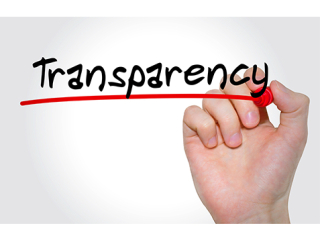
Posted by Ronnie Downes[1]
A new resource, prepared by the OECD in collaboration with other global partners, provides a gateway to international standards and makes it easier for countries to put budget transparency into practice
The budget is a government’s central policy document, which aims to turn plans and aspirations into reality. So says the OECD Recommendation on Budgetary Governance, one of the international standards for public financial management. How the budget and its various trade-offs are managed sends powerful signals, domestically and internationally, about fiscal discipline, efficiency and commitment to achieving results. Poor fiscal management can leave countries vulnerable to shocks, with harmful consequences for citizens and adding to the longer-term costs of public borrowing.
For these and other reasons, budget and fiscal transparency have long been a priority for international standard-setters. The IMF’s Fiscal Transparency Code was introduced in 1998, partly in response to experiences from the East Asia financial crisis of that period; and the OECD produced the Best Practices for Budget Transparency in 2001. Since then, the OECD and IMF have updated their standards – taking into account the lessons learned from the most recent global economic and financial crisis – and other international initiatives have added new perspectives and analyses. The Public Expenditure and Financial Accountability (PEFA) framework began in 2001, an initiative of international development partners including the European Commission, IMF, World Bank Group and some national governments, to harmonise assessment of public financial management frameworks. The International Budget Partnership (IBP) has conducted its Open Budget Survey biannually since 2006, providing an influential international metric of budget transparency. The International Federation of Accountants (IFAC) advocates more transparent public financial reporting via the Accountability.Now initiative. The World Bank Group – in addition to its support for PEFA – supports transparency via multiple programmes including the BOOST initiative to make budget data more open and usable. Drawing these perspectives together is the Global Initiative for Fiscal Transparency (GIFT), founded in 2011 as a multi-stakeholder network to advance fiscal transparency, participation and accountability around the world, and to coordinate and steer this global agenda.
The abundance of bodies involved in budget and fiscal transparency is, in one sense, an encouraging sign that the concept has “caught on”. From another perspective – that of the citizen, the national budget practitioner or civil society advocate – the landscape has become, perhaps, a little confusing. What exactly are the standards that we should be pursuing? Are the various international guidance documents consistent with one another; and if so, how do they complement each other? What if my main interest is in one topic, such as the role of parliament or the application of open data: what is the international best practice, and how does it fit into the “bigger picture”?
In 2016, the OECD started work on a Budget Transparency Toolkit to help answer these questions. The project was prompted by the G20 which had called for a practically-focused guide to budget transparency, with a view to supporting the global agenda of good governance, integrity and anti-corruption. From the outset, the OECD benefited from the active support and collaboration of the international bodies listed above. These partners recognise the value of budget transparency as an important public good, and agreed to pool knowledge, expertise and insights.
The resulting Budget Transparency Toolkit, which was introduced at the IMF Fiscal Forum in Washington DC on 21 April, is in two parts. The first part is a “gateway” to the various organisations that are active in budget and fiscal transparency and introduces their respective standards, guidelines and other instruments. The gateway presents a full spectrum of relevant resources and points the reader to the core underlying documents.
The second part of the Toolkit presents the OECD’s overview of how the various common elements intersect and their relevance in different institutional settings. In particular, this second part provides practical ‘starting points’ for applying good practices in five spheres of activity:
- the executive branch, with a focus on clear budget reporting
- the legislative branch, with a focus on effective scrutiny and the role of parliamentary committees
- the role of independent oversight bodies, including supreme audit institutions and fiscal councils
- engagement by citizens and civil society, including citizen’s budgets, the use of open data and participatory approaches to budgeting; and
- engagement with the private sector, including through open procurement, managing resource endowments and good infrastructure governance.
The benefits of budget transparency are manifold: enhanced public accountability; inclusiveness and quality in policy-making; trust in the institutions of government; as well as support for integrity and anti-corruption. By introducing the wealth of international guidance available, and illustrating how to employ this guidance to best effect, the Budget Transparency Toolkit will hopefully become a valued resource for practitioners and public alike.
[1] Ronnie Downes is Deputy Head, Budgeting & Public Expenditures, at the Organisation for Economic Co-operation and Development (OECD).
Note: The posts on the IMF PFM Blog should not be reported as representing the views of the IMF. The views expressed are those of the authors and do not necessarily represent those of the IMF or IMF policy.





